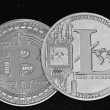Table of Contents Show
I. Humble Beginnings: The Spark of Genius
The story of Thomas Alva Edison begins not in the laboratories of Menlo Park but in the small town of Milan, Ohio, where he was born on February 11, 1847. The youngest of seven children, Edison’s early years were marked by curiosity, a thirst for knowledge, and a mind that refused to be constrained by the conventions of the time. His father, Samuel Edison, was a man of many trades—an exiled Canadian who dabbled in politics, real estate, and agriculture—while his mother, Nancy, was a former schoolteacher who instilled in young Thomas a love of learning.
From a young age, Edison was different. He was inquisitive, constantly asking questions, and often lost in thought. But he was also a sickly child, suffering from frequent bouts of illness, which kept him out of the traditional school system. His formal education lasted only a few months before his mother took over, recognizing that her son’s potential lay far beyond the walls of a classroom. Under her guidance, Edison developed a passion for reading, devouring books on a wide range of subjects, from chemistry to mechanics.
Edison’s early experiences were shaped by a series of small but significant events that would set the course for his future. At the age of 12, he took a job as a newsboy on the Grand Trunk Railway, selling newspapers, candy, and other goods to passengers. It was during this time that he conducted his first experiments, setting up a small laboratory in the baggage car. But it was also here that Edison experienced the accident that would define his life in more ways than one. While trying to jump onto a moving train, he was pulled by the conductor, who inadvertently struck Edison on the side of his head, causing a permanent hearing loss that worsened over time. Rather than being seen as a disability, this partial deafness became a source of focus for Edison, allowing him to concentrate on his work without distraction.
By the age of 16, Edison was already a self-taught telegrapher, having learned Morse code from a stationmaster he had saved from a runaway train. This skill would prove invaluable as he moved into the world of invention, where communication and the transmission of information were at the heart of the technological revolution that was beginning to sweep across America.
II. The Rise of the Inventor: From Telegraphy to the Phonograph
Thomas Edison’s entry into the world of invention was not a sudden leap but a gradual ascent, built on the back of years of experimentation and hard work. After moving to Boston in 1868, he filed his first patent for an electric vote recorder, a device that was met with little interest. But Edison was undeterred. He moved to New York City in 1869, where he found work improving stock tickers—machines that transmitted stock prices over telegraph wires. It was here that Edison’s ingenuity began to shine. He developed the Universal Stock Printer, which could synchronize several stock tickers’ operations, and sold it to the Gold and Stock Telegraph Company for $40,000—a fortune at the time.
With this windfall, Edison established his first laboratory in Newark, New Jersey, where he and a small team of workers began to develop a series of telegraph-related inventions. The most notable of these was the quadruplex telegraph, a device that could send two messages simultaneously in both directions over a single wire, effectively quadrupling the capacity of existing telegraph lines. This invention caught the attention of Western Union, the dominant telegraph company, which bought the rights for $10,000, cementing Edison’s reputation as a leading inventor.
But it was in 1877, with the invention of the phonograph, that Edison truly made his mark on history. The phonograph was a machine that could record and reproduce sound, a concept so novel that it seemed almost magical. Edison’s initial idea was to create a device that could record telegraph messages, but he quickly realized the potential for sound recording. His first phonograph used a tinfoil-covered cylinder to capture sound vibrations, which could then be played back by a stylus. When Edison first demonstrated the phonograph, it was met with astonishment. For the first time, the human voice could be recorded and reproduced, a feat that seemed to defy the laws of nature.
The phonograph earned Edison the nickname “The Wizard of Menlo Park,” a title that would follow him for the rest of his life. It also marked the beginning of Edison’s career as a public figure, with his name becoming synonymous with innovation and progress. But as with many of Edison’s inventions, the phonograph was just the beginning. He would go on to refine and improve the device, eventually creating a machine that would lay the foundation for the modern music and recording industry.
III. Illuminating the World: The Invention of the Incandescent Light Bulb
If the phonograph made Edison famous, it was the incandescent light bulb that made him immortal. The invention of electric light was not a singular event but the culmination of years of research, experimentation, and persistence. By the mid-1870s, the idea of electric lighting was already being explored by several inventors, but the challenge was to create a practical and long-lasting light source that could replace gas lamps and candles.
Edison’s approach to this problem was methodical and relentless. In 1876, he established his now-legendary laboratory in Menlo Park, New Jersey, where he assembled a team of skilled workers and scientists to tackle the problem of electric lighting. Edison’s vision was not just to invent a light bulb but to create an entire electrical system that would make electric lighting practical for homes and businesses.
The breakthrough came in 1879 when Edison and his team discovered that a carbon filament, when heated in a vacuum, could produce a steady and long-lasting glow. This was the key to creating a commercially viable light bulb. On October 22, 1879, after hundreds of experiments and countless hours of work, Edison’s incandescent light bulb stayed lit for 13.5 hours—a remarkable achievement that signaled the dawn of a new era.
But Edison’s genius lay not just in the invention of the light bulb but in his ability to envision and create the infrastructure needed to make electric lighting a reality. He developed a complete electrical distribution system, including generators, wires, and meters, that could deliver electricity to homes and businesses. In 1882, Edison’s Pearl Street Station in New York City became the world’s first commercial power plant, providing electricity to 59 customers in Lower Manhattan. This marked the beginning of the electrification of the modern world, with Edison at the helm.
Edison’s success with electric lighting was not without competition. Inventors like Sir Hiram Maxim and Joseph Swan were also working on similar technologies, and legal battles over patents would follow. But Edison’s name would forever be associated with the light bulb, a symbol of human ingenuity and the power of invention.
IV. The Struggle for Power: Edison, Tesla, and the War of Currents
Thomas Edison’s achievements in electric lighting catapulted him to the pinnacle of his career, but they also set the stage for one of the most famous rivalries in the history of technology—the War of Currents. This conflict pitted Edison’s direct current (DC) electrical system against the alternating current (AC) system championed by George Westinghouse and Nikola Tesla.
Edison’s DC system was the first to be widely adopted, but it had significant limitations. Direct current could not be easily transmitted over long distances, requiring power plants to be located close to consumers. In contrast, Tesla’s AC system, which he developed after working briefly for Edison, could be transmitted over much greater distances with less loss of power. Westinghouse recognized the potential of Tesla’s AC and began promoting it as the superior technology.
The War of Currents was not just a technical battle but a public relations war. Edison, concerned that AC could undermine his business interests, launched a campaign to discredit the technology. He argued that AC was dangerous and even went so far as to demonstrate its lethal potential by publicly electrocuting animals. This campaign reached its peak with the use of AC in the first electric chair execution in 1890, an event that Edison hoped would turn public opinion against the technology.
But despite Edison’s efforts, the advantages of AC were undeniable. Westinghouse and Tesla won the contract to supply power for the 1893 World’s Columbian Exposition in Chicago, a victory that demonstrated the feasibility and superiority of AC on a grand scale. The following year, they won the contract to build the first long-distance power transmission system from Niagara Falls to Buffalo, New York, sealing the fate of the War of Currents.
The defeat of DC was a bitter pill for Edison to swallow. It marked the end of his dominance in the electrical industry and the beginning of a new era of electrical power. But Edison’s legacy was far from tarnished. His contributions to the development of electrical technology were foundational, and his name remained synonymous with innovation and progress.
V. Legacy: The Man Behind the Myths
Thomas Edison’s life was one of extraordinary achievement, marked by a relentless pursuit of innovation and a desire to change the world. By the time of his death in 1931, Edison held 1,093 patents—a record that stood for decades. His inventions, from the phonograph to the light bulb, had transformed the way people lived, worked, and communicated. Yet, behind the myth of the “Wizard of Menlo Park” was a man of contradictions—a visionary who could be both brilliant and ruthless, a tireless worker who often sacrificed personal relationships for the sake of his ambitions.
Edison’s relentless drive to innovate was matched only by his unyielding determination to succeed. He was a man who believed in the power of hard work, famously saying, “Genius is one percent inspiration and ninety-nine percent perspiration.” This philosophy drove him to push himself and his team to the limits, often working through the night, fueled by his insatiable curiosity and an unwavering belief in his own ideas. But this same drive also made him a difficult and demanding leader. He could be dismissive of those who disagreed with him and was known to take credit for the work of others, a trait that alienated some of his closest collaborators.
One of the most significant relationships in Edison’s life was with Nikola Tesla, the brilliant but eccentric inventor who worked for Edison briefly before striking out on his own. The two men had very different approaches to invention: Tesla was a visionary who thought in grand, sweeping concepts, while Edison was a pragmatist who focused on practical applications. Their relationship was strained from the start, with Edison reportedly dismissing Tesla’s ideas as impractical. This tension would eventually lead to Tesla’s departure and the beginning of the War of Currents.
Despite his flaws, Edison’s contributions to science and technology were unparalleled. He was a master of the iterative process, continually refining and improving his inventions until they were ready for the market. This methodical approach, combined with his ability to see the big picture, allowed him to create not just individual devices but entire industries. The phonograph gave birth to the music recording industry, the light bulb to the electric utility industry, and the motion picture camera to the film industry. Edison’s impact on the modern world cannot be overstated; his inventions have shaped nearly every aspect of daily life.
But perhaps Edison’s greatest legacy is not his inventions but his role in shaping the very concept of innovation. He was one of the first to recognize the importance of research and development, establishing Menlo Park as the world’s first industrial research laboratory. This model of organized, systematic innovation became the blueprint for modern R&D departments, laying the groundwork for the technological advancements of the 20th and 21st centuries.
In the end, Thomas Edison was a man who embodied the American spirit of ingenuity and perseverance. He was a self-made man who rose from humble beginnings to become one of the most influential figures in history. His life was a testament to the power of creativity, hard work, and an unshakable belief in the possibilities of the future.
Edison’s death on October 18, 1931, marked the end of an era, but his legacy lives on. The world he helped create is one where light, sound, and motion have been harnessed and transformed in ways that were unimaginable in his time. As the lights dimmed across America in a symbolic gesture of mourning, it was clear that Edison had not only illuminated the world with his inventions but had also left an indelible mark on the fabric of history itself.
In the decades since his death, Edison’s legacy has been the subject of much debate. Some view him as the quintessential American hero—a man whose brilliance and determination changed the world for the better. Others see a more complex figure, a man whose drive for success sometimes led to questionable ethical decisions and ruthless business practices. But regardless of one’s perspective, there is no denying that Thomas Edison was one of the most important and influential figures of the modern age.
As we continue to navigate the challenges and opportunities of the 21st century, the lessons of Edison’s life remain as relevant as ever. His belief in the power of innovation, his willingness to take risks, and his refusal to give up in the face of failure are qualities that continue to inspire inventors, entrepreneurs, and leaders around the world. In the story of Thomas Edison, we find a powerful reminder of the transformative potential of human ingenuity and the enduring impact of those who dare to dream of a better future.









